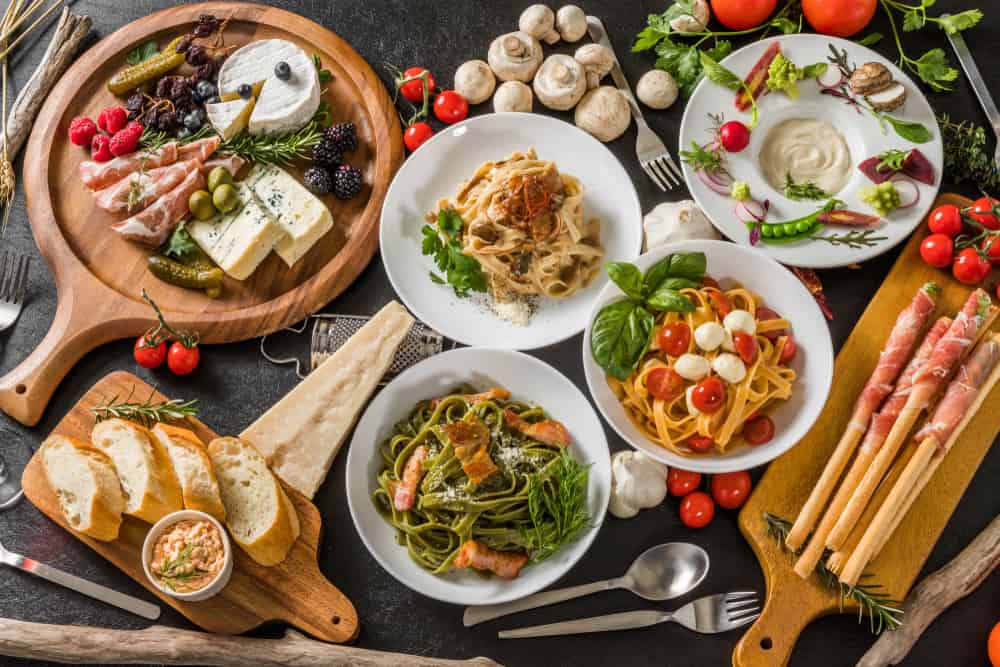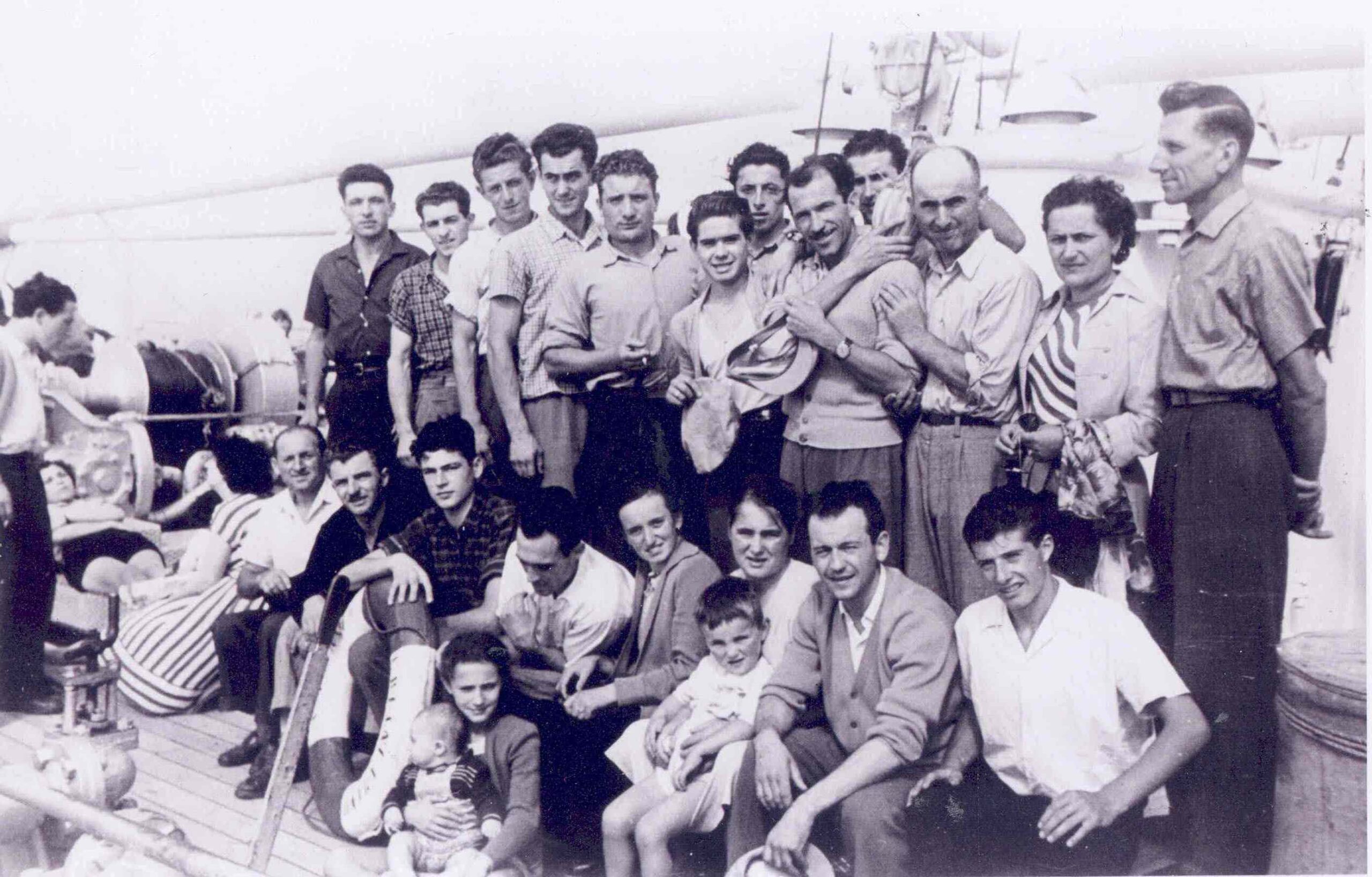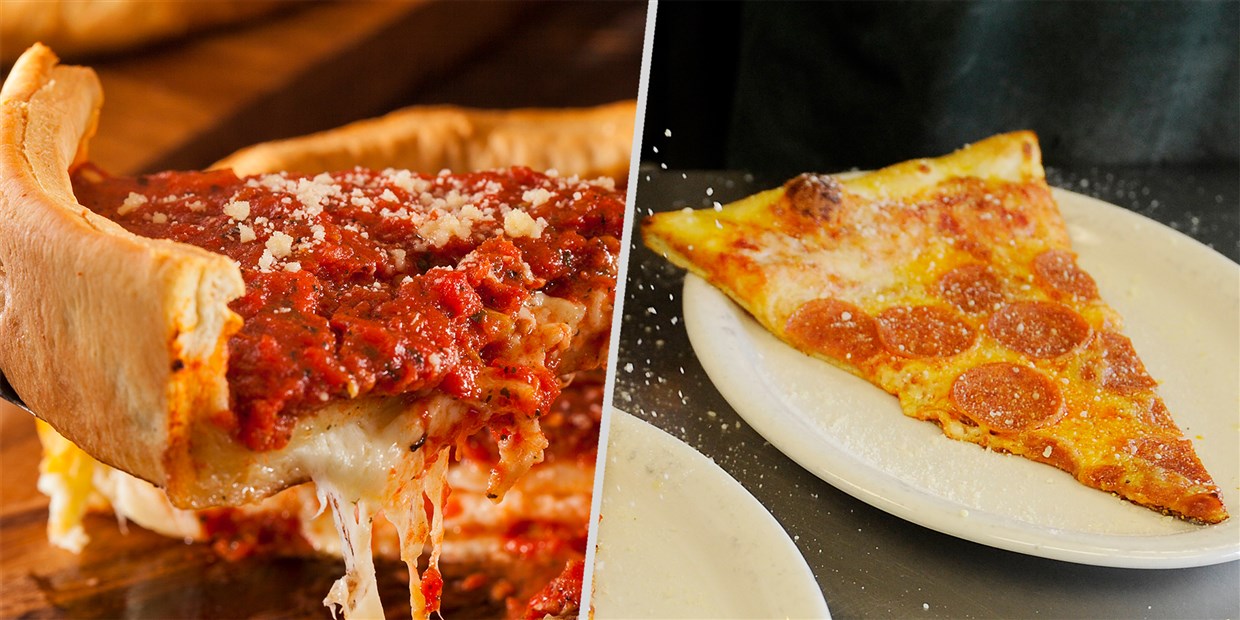Heritage
The History of Italian American Food

Is there anything more comforting than Italian food? Pizza, pasta, and garlic bread, the holy trinity of Italian food in America. But just how did these staples make their way over to America? And just how authentic are these standard dishes?
The Italian Immigration Wave
During the late 19th century and into the early 20th the United States welcomed a large wave of Italian immigrants to its shores. These Italian Americans were forced to change the way they prepared the traditional dishes they brought with them to their new home.
One of the first dishes to become popular in American culture was Chicken Tetrazzini, which is still a popular Italian American dish today. In fact, there are many dishes that were invented by Italian immigrants in honor of a famous opera singer known as The Florentine Nightingale. In fact, there are quite a few dishes invented in the early 1900s during this Italian immigration wave that have become ingrained in American culture.
The famous Philly cheese steak sandwich was invented by an Italian. The muffuletta sandwich of New Orleans (the famous sandwich covered in fresh olive salad) was also invented by an Italian. As well as cioppino (fish stew) now beloved in the city of San Francisco. These regional dishes were gifted to us by Italian Americans but have since become American cultural icons.
But how did the Italian dishes we have come to love (and those we didn’t even know were Italian in the first place) come to vary so differently from the cuisine of Italy itself?
A New Definition of Italian Food
In Italy there was no defined “Italian food” due to the fact that Italy itself was so regionalized. The food that we enjoy today, typically covered in some form of red sauce and heavy in pasta, is not typically enjoyed throughout all of Italy.
Depending on the region of Italy an 19th or 20th century Italian immigrant came from, they brought different dishes, flavors, and perspectives on cooking. For example, Sicilians enjoyed spicier sauces and dishes such as veal Marsala, while the Naples region is the home of pizza and calzones. In the northernmost region of Italy, rice and polenta are far more popular than pasta and olive oil is second fiddle to butter.
A majority of Italian immigrants at this time came from the southern part of Italy, bringing along with them the dishes that were popular in their home region. Because of this influx of southern Italian cuisine and the popularization of their dishes in American culture, Americans began to associate these southern Italian foods as standard fare among all Italians.
Portions and Ingredients Provide Inspiration
It’s no secret that Americans like their portions large and their food supply unending. The Italian Americans during this era of American history were no doubt delighted at the access to new and cherished ingredients, but equally as excited to see their access and portion size had increased tremendously. Reports of meatballs roughly the size of baseballs nods to this excitement at the access to fresh meat.
Meat and other ingredients were in abundance in comparison to Italy, inspiring and igniting the passion for cooking in many Italian Americans. Access to good food was no longer a status symbol, but rather it seemed to be a right in their new country. The result became an increase in portion sizes because they simply could make a dish that size.
Popularity Increases
As World War II raged in Europe, grateful Italian families and restaurant owners shared their dishes with the American soldiers. Upon returning home, those soldiers continued to crave the Italian food they had come to love. Enter the modern Italian restaurant.
Italian Americans began fulfilling the need for Italian food by opening restaurants serving the dishes that returning soldiers craved. Of course these soldiers weren’t dining alone. They introduced their families and friends to the food that sustained them during the war, creating even more customers and loyal fans of Italian American food.
In the post-war 50’s and 60’s, Italian food quickly became a staple in the American diet. Delis began stocking Italian meats and cheeses, and spumoni (an Italian form of ice cream) became a popular dessert. Later, in the 70’s and 80’s, we saw the rise of dishes inspired by other regions of Italy such as Chicken Piccata, risotto, pesto, Calamari, and cannoli. Not to mention espresso making its way to American coffee-drinkers.
Ready For Mass Market
One of the largest reasons why Italian American food has become so ingrained in American culture is its mass market appeal. This is likely due to the success of one Italian immigrant you’ve probably heard of before: Chef Boyardee. His name was actually Ettore Boiardi, and he was born in northern Italy in 1897, immigrating to the United States in 1914 at just 16 years old.
Ettore was a fantastic cook and worked his way up through kitchens in New York (even working at the famous Plaza Hotel) until he moved to Cleveland. He worked in a hotel restaurant until he opened up his own Italian place. His food became so popular that Boiardi created take home meal kits for families to recreate the food at home. You can see where this is leading.
In 1928, the Chef Boiardi Food Company was born. Their first dish was a spaghetti dinner meal kit. As time went on, Boiardi changed the name of his company to Boy-Ar-Dee to help Americans pronounce it, and moved to canned meals instead of boxed. These meals not only made Italian American food even more accessible, but raised entire generations on the idea that Italian food is made mostly of heavy pasta, red sauce, and cheese.
Finding Our Roots
Today, many Italian restaurants are serving more than just southern Italian inspired fare. A rise in the appreciation of the regionalism of Italy is resurfacing, leading to a better understanding of the term traditional Italian food. As the craft food industry grows, we’re also seeing a return to the more traditional recipes of the southern Italian foods we’ve come to love, too. Less American, more true Italian inspired dishes.
-

 Heritage5 years ago
Heritage5 years agoA Rough Beginning For Italians in America
-

 Heritage5 years ago
Heritage5 years agoWhat it truly means to be Italian
-

 Italian5 years ago
Italian5 years agoNew York vs Chicago Pizza
-

 Heritage5 years ago
Heritage5 years agoItalians And Family Values
-

 Italian5 years ago
Italian5 years agoTop 9 Popular Italian Pastries
-

 Heritage5 years ago
Heritage5 years agoEllis Island Italian Americans
-

 Italian5 years ago
Italian5 years agoIn 1962, an Italian magazine carried a story on how the world will look in 2022. Is it Real???
-

 Heritage5 years ago
Heritage5 years agoHow Italian American families celebrate holidays






